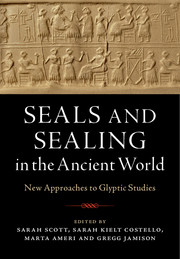 Seals and Sealing in the Ancient World
Seals and Sealing in the Ancient World from Part III - Egypt
Published online by Cambridge University Press: 24 April 2018
The primary function of scarabs during all periods of their use in Egypt was amuletic, yet at times scarabs were also used as the most prevalent type of seal for the central administration. This is especially true for the late Middle Kingdom (ca. 1850–1700 BCE), the period that saw the beginning of mass production of scarabs. Thousands of seal impressions made by scarabs were found in administrative units of this period, reflecting the large-scale use of scarabs as seals for the central administration. This chapter will present the evidence for the widespread use of scarabs in the Middle Kingdom administration, with a focus on the late Middle Kingdom. It will discuss the most common designs found on seal impression, as well as the current views concerning the use of royal-name, private-name, and design scarabs for this purpose.
To save this book to your Kindle, first ensure no-reply@cambridge.org is added to your Approved Personal Document E-mail List under your Personal Document Settings on the Manage Your Content and Devices page of your Amazon account. Then enter the ‘name’ part of your Kindle email address below. Find out more about saving to your Kindle.
Note you can select to save to either the @free.kindle.com or @kindle.com variations. ‘@free.kindle.com’ emails are free but can only be saved to your device when it is connected to wi-fi. ‘@kindle.com’ emails can be delivered even when you are not connected to wi-fi, but note that service fees apply.
Find out more about the Kindle Personal Document Service.
To save content items to your account, please confirm that you agree to abide by our usage policies. If this is the first time you use this feature, you will be asked to authorise Cambridge Core to connect with your account. Find out more about saving content to Dropbox.
To save content items to your account, please confirm that you agree to abide by our usage policies. If this is the first time you use this feature, you will be asked to authorise Cambridge Core to connect with your account. Find out more about saving content to Google Drive.